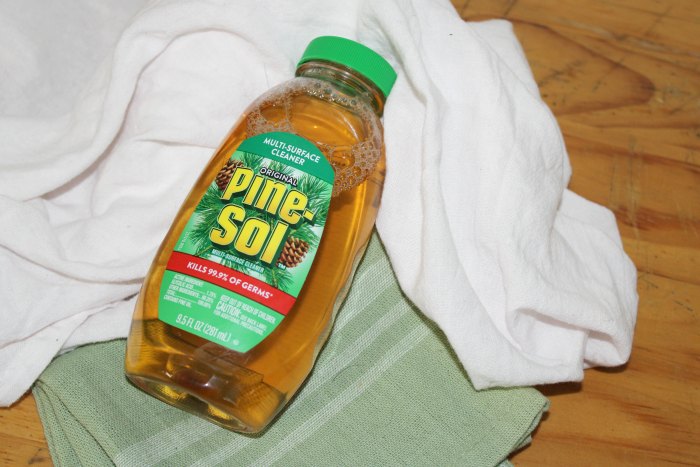Pine-Sol is an all purpose cleaner and multi-surface cleaning product that can clean and disinfect your home, floors, kitchen, and more. Although the original Pine-Sol formulation was pine oil-based, today the cleaners sold under the Pine-Sol brand contain no pine oil.
Last year, Pine-Sol Original was added to the U.S. Environmental Protection Agency’s (EPA) growing list of products that have proven effective in killing the new coronavirus (SARS-CoV-2) on hard surfaces, based on results from laboratory testing. The cleaner, with the active ingredient glycolic acid, has been shown to kill the virus that causes COVID-19 after about 10 minutes of contact time on a surface. The latest update brings the total number of products approved by the EPA for use against SARS-CoV-2 to 32; Lysol Disinfectant Spray and Lysol Disinfectant Max Cover Mist were the first to receive agency approval.
What does Pine-Sol contain?
In 2006, The Clorox Company’s product line included “Clorox Commercial Pine-Sol Brand Cleaner”, with the same ingredients and concentrations as “Original Pine-Sol Brand Cleaner 1. In 2008, the material safety data sheet for the “Original Pine-Sol Brand Cleaner 1” formulation listed 8–12% pine oil, 3-7% alkyl alcohol ethoxylates, 1-5% sodium petroleum sulfonate and 1-5% isopropyl alcohol.
In January 2013, Clorox began making a product called Original Pine-Sol Multi-Surface Cleaner which included glycolic acid while lacking any pine oil.
In January 2014, Clorox announced that Pine-Sol products would no longer contain pine oil, due to pine oil’s limited supply and increased cost. In response to consumer requests for the original formula, Clorox made available a product containing 8.75% Pine oil to online purchasers, but said it would not be sold in stores.
As of 2018, Pine-Sol can be found on store shelves with an ingredient label stating “Contains Pine Oil” but this is not listed as an active ingredient. Pine oil in modern Pine-Sol seems to be added for fragrance only, as the product still uses glycolic acid as the sole active ingredient.
How to Dispose of Pine-Sol
It’s all about choices. And doing what’s best for the environment is a goal that’s important for all of us! One area where each of us can make a positive contribution is in the way we dispose of cleaning products like Pine-Sol. And it all boils down to one simple question: “How can I do the right thing in my own home, every day?”
Safe Disposal of Household Cleaners
Follow label directions if provided. If there are no directions, think about how you use the product.
- If it mixes with water, it’s water-soluble. Most liquid, gel and powder water-soluble household cleaning products can be disposed of down the drain with running water just like when you use them.
- Most solid products (soap scouring pads, sticks, towelettes, etc.) can be placed in the trash.
- For other products (such as oven cleaners, crystal drain openers and furniture polishes) call the manufacturer’s toll-free number (or write to them) for disposal recommendations, or check with your local waste disposal facility.
Proper Disposal of Containers
- Empty any unused product.
- Check with your community recycling center to see what type of plastic, paperboard and metal containers they accept.
- Refer to local guidelines for recycling plastics, paperboard and aerosol cans (steel and/or aluminum).
Water-soluble household cleaning products (HCP) usually do not fall into the HHW category because they go safely down the drain or in the trash. So, think before you treat them as HHW — you’ll be saving your community money!
Cutting Down on Trash
We all want to conserve resources and keep waste to a minimum. It’s called waste reduction, and it means cutting down on excess products and their packages at the source.
The soap and detergent industry has been working hard to conserve resources and reduce waste. We’ve developed such innovations as concentrated products in smaller packages, combination products (providing two functions in one product), refillable containers, and we’re also using recycled materials to make new containers. In fact, the industry has become one of the biggest purchasers of recycled plastics, giving new life to the plastics you recycle!
Here’s where you come in. By buying concentrated products, refills or containers made from recycled materials and recycling your used containers, you’re keeping excess trash out of landfills. It’s partnerships like these that will provide the long-term solutions. And, by working together, we’ll all be doing what’s best for our environment. SEE: How To Promote Personal, Domestic and Community Hygiene






